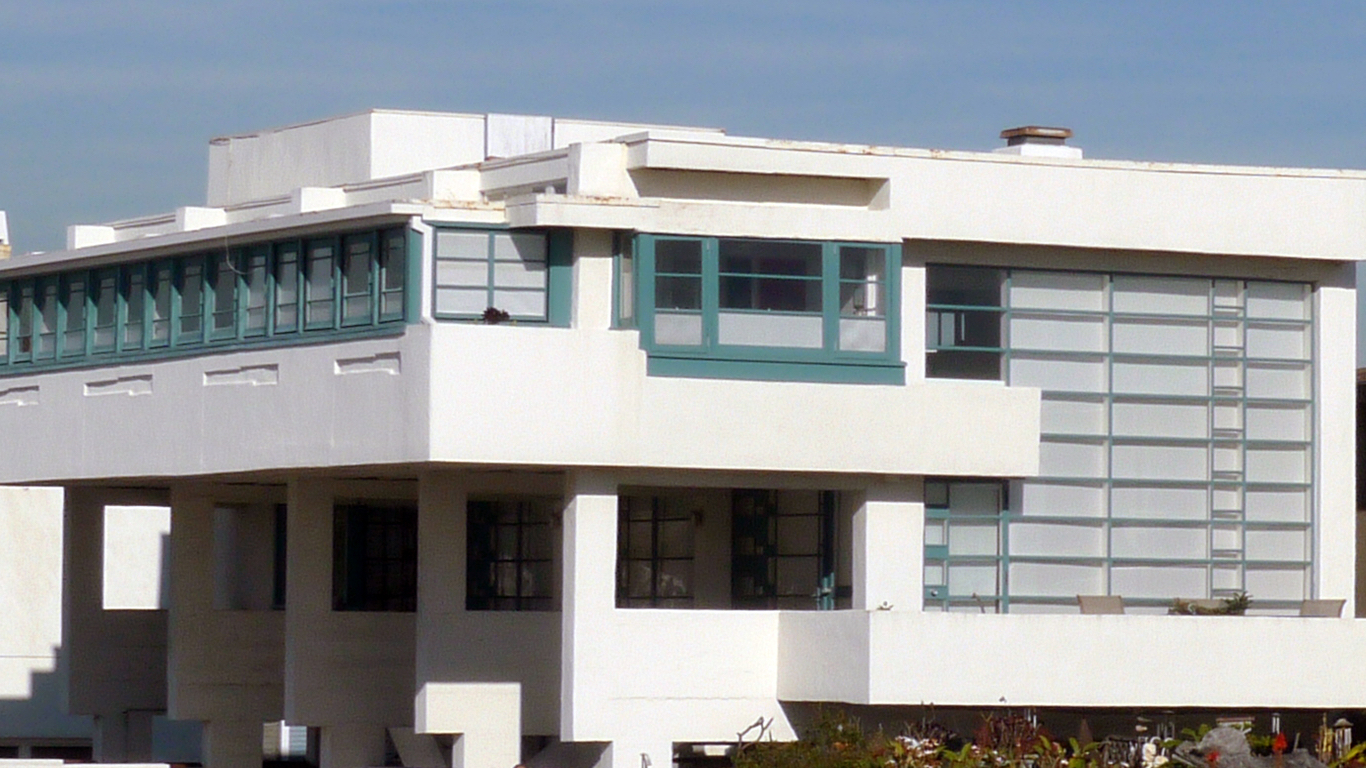
Rudolph Schindler, an Austrian-born American architect, left an indelible mark on the architectural landscape of Southern California. Born on September 10, 1887, in Vienna, Schindler displayed a keen interest in design and construction from an early age. He pursued his education at the Vienna University of Technology, where he studied under renowned architect Otto Wagner.
After completing his studies, Schindler worked for several prominent Viennese architects, including Adolf Loos. During this time, he was exposed to the emerging modernist movement, which would greatly influence his future work. In 1914, Schindler ventured to the United States, settling in Chicago before eventually making his way to Los Angeles.
Schindler’s architectural career in Los Angeles began in the studio of Frank Lloyd Wright, where he worked on the iconic Hollyhock House. Wright’s organic architecture and emphasis on the integration of nature deeply influenced Schindler’s design philosophy. In 1922, Schindler established his own architectural practice in Los Angeles, forging his unique path within the modernist movement.
Known for his innovative approach to space, Schindler’s designs challenged traditional notions of architecture. He sought to create environments that harmoniously blended with their natural surroundings and responded to the needs and lifestyles of their occupants. Schindler’s designs often featured open floor plans, extensive use of glass, and an emphasis on functionality and simplicity.
One of Schindler’s most notable works is the Kings Road House, completed in 1922. This residence, considered a pioneering example of modern architecture, showcased Schindler’s signature style with its cantilevered balconies, interconnected interior spaces, and integration of indoor and outdoor living areas. The house was designed as cooperative living quarters for two couples, reflecting Schindler’s interest in communal living and the social aspects of architecture.
Schindler’s other prominent projects include the Lovell Beach House, the How House, and the Schindler House, also known as the Kings Road House. Each of these works showcased his commitment to organic design principles, spatial exploration, and integration of technology and materials.
Despite his innovative approach, Schindler faced challenges in gaining widespread recognition during his lifetime. He primarily worked on small-scale residential projects, and his radical design ideas were often met with skepticism. However, his influence on the architectural community continued to grow, and his work gained significant recognition posthumously.
Rudolph Schindler’s legacy is marked by his contribution to the modernist movement and his unique vision of architecture. His designs continue to inspire architects and designers around the world. Schindler’s emphasis on the relationship between architecture and its environment, his experimental use of space and materials, and his dedication to creating harmonious living environments make him a revered figure in architectural history.
Schindler’s impact extends beyond his built works. He also played a significant role in shaping architectural education in California. As a professor at the University of Southern California, he influenced countless students and promoted the ideals of modern architecture.
Rudolph Schindler’s architectural legacy remains relevant and influential to this day. His innovative designs, commitment to the integration of nature, and his exploration of spatial relationships continue to inspire architects seeking to push the boundaries of the built environment. Schindler’s work embodies the spirit of modernism and stands as a testament to his creative vision and enduring contributions to the field of architecture.
Select Projects:
Lovell Beach House, Newport Beach CA
Samuel Freeman House, Los Angeles CA
Schindler House, West Hollywood CA
DeKeyser Duplex, Los Angeles CA
Wilson House, Los Angeles CA
Van Dekker House, Woodland Hills CA
S Goodwin House, Studio City CA
Druckman House, Los Angeles CA
Tischler House, Los Angeles CA
Bethlehem Baptist Church, Los Angeles CA